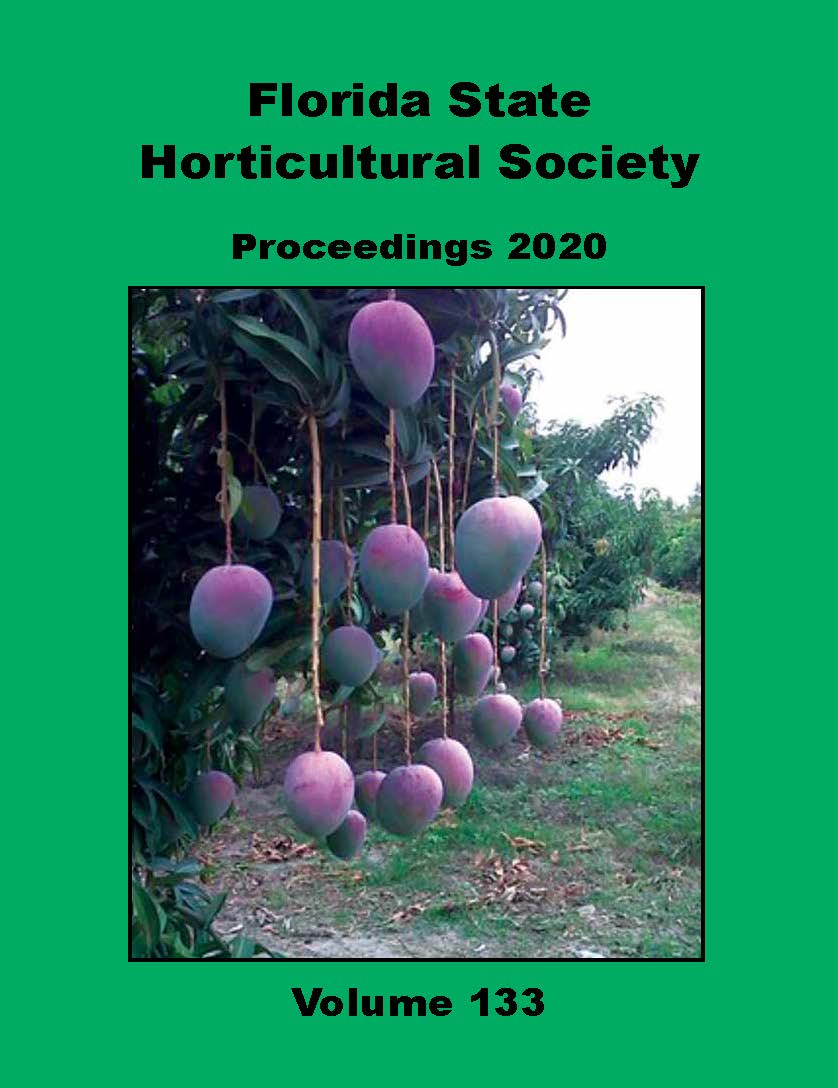Exogenous Gibberellic Acid and Cytokinin Effects on Budbreak, Flowering, and Yield of Blackberry Grown under Subtropical Climatic Conditions
Abstract
In subtropical climates, inadequate winter chill limits blackberry (Rubus L. subgenus Rubus Watson) production by causing poor and erratic floral budbreak. To compensate for a lack of chilling, bud dormancy-breaking agents must be developed for subtropical blackberry production. The objectives of this study were to evaluate cultivar 3 exogenous GA3 interactions, characterize dose effects of exogenous GA3, and examine synergistic effects of GA3 and 6-BA. Three field experiments were conducted in west central Florida. In the first experiment, ‘Natchez’, ‘Navaho’, and ‘Ouachita’ were treated with GA3 at 0 or 99 g·haL1. Budbreak was promoted by exogenous GA3 in all three cultivars (0.9% to 4.5% vs. 42.9% to 69.4%), but yield responses varied considerably. In the second experiment, ‘Natchez’ was treated with GA3 at 0, 25, 99, or 198 g·haL1. Budbreak increased linearly with GA3, but yield decreased exponentially with GA3 because of dose-dependent flower abortion. In the third experiment, ‘Natchez’ was subjected to five treatments: 1) water control; 2) GA3 spray application; 3) 6-BA spray application; 4) combined spray application of GA3 and 6-BA; and 5) sequential spray application of 6-BA at 9 days after GA3 application. As a result, GA3-containing treatments caused 65% to 83% yield reductions compared with the control (2382 vs. 410–823 g/ plant). These results demonstrate that GA3 is a highly effective bud dormancy-breaking agent for blackberry. The use of GA3 can be an important management practice for subtropical blackberry production, but its practical implementation must consider cultivar-dependent responses.

